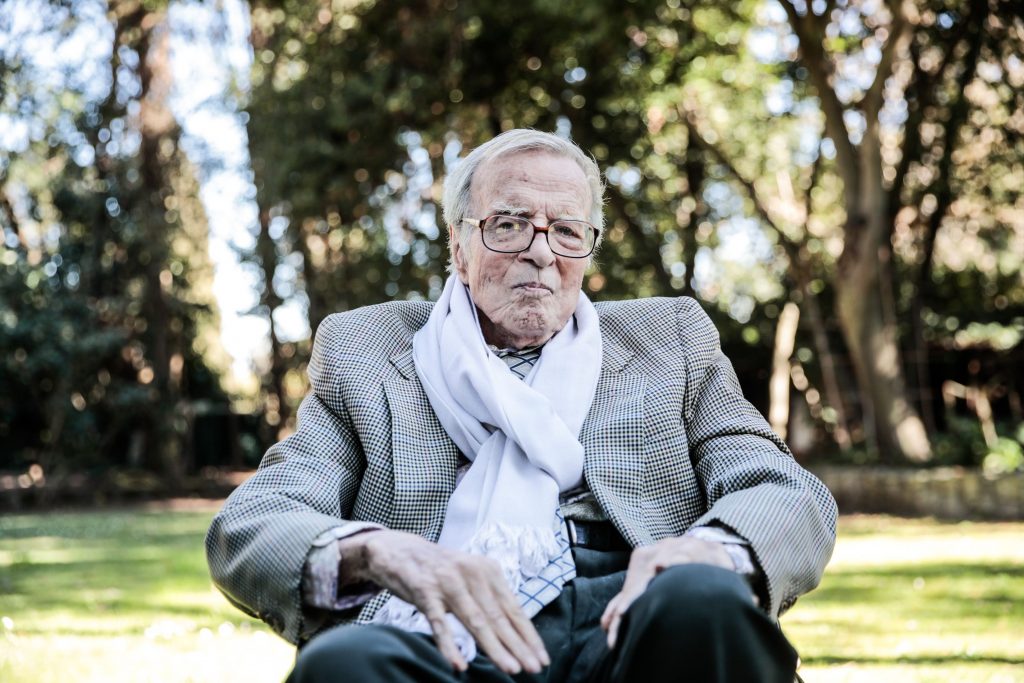Franco Zeffirelli was like a sultan with three wives; opera, theatre and cinema. ‘While making love to one makes you think, next time I have to try out the other one’; he wrote. His name was magic; it meant splendour, often on a massive scale. The arena at Verona seething with white horses and Spanish dancers for Carmen he staged in 2006 with a huge gilded pyramid dooming over a cast of hundreds, are testimony to this. No details was overlooked, no heartstring left untouched. Beauty, spectacle and Zeffirelli went together.
Yet his name had once meant almost nothing. He was illegitimate, and his mother, obliged to conceal his father, had meant to call him ‘Zeffireth’, a little breeze. A clerical error made him what he was. After his mother’s death, when he was six, Aunt Lide, a cousin, brought him up. She stayed with her like a mother, until she died; the only love apart from his many dogs, he believed he could fully trust.
His greatest love was, however, for Luchino Visconti, the great Italian theatre, opera and cinema director, who made the classic ‘Death in Venice’ (1971). When they met Franco was still a bit part actor and Luchino, the leading director of Italy. For several stormy years, they lived together. They hated the word gay, because it lacked virility. He preferred to call himself a homosexual, as he felt term gay was less elegant. Visconti taught him how to lose his temper explosively, effectively and then be charming again. Charm certainly helped him with the divas he met. He persuaded Sutherland to loosen up. He directed women better than men. He was almost as easily moved to tears as they were!
It is not hard to see how his obsession had begun. In Florence he built his own toy theatres. He began to study architecture and look closely at the art all around him. His staging of ‘Romeo & Juliet’ at London (1960), with very young actors was a wild success. His ‘The Taming of the Shrew’ in 1967 was a hit too, with Richard Burton and Elizabeth Taylor, both backing and funding it. For his six hour TV film, ‘Jesus of Nazareth’, his best work, stars flew in from Hollywood to beg for roles.
As he became more famous and popular, the critics increasingly sniped at him. They wanted him to make art house films, ugly dark elitist stuff and mocked at his work as reactionary. He had watched communists at work as a child, but had never drunk that poisonous milk. He was a true socialist, whose duty was to delight the people, and to make them dream. When critics panned ‘The Champ’ for being sentimental or ‘Endless Love’ as soft porn, the public still trooped in to savour the delight.
Given his loathing for the left, he got into politics eventfully. He was an old fashioned Catholic. The Vatican accepted his way of life as sinful but trusted in forgiveness. He supported the position of Catholics on abortion. He was controversial too as he made blasphemous representation of biblical figures in his films. He described Martin Scorsese’s film ‘The Last Temptation of Christ’ as a product of ‘that Jewish Scum of Los Angeles which is always spoiling for a chance to attack the Christian World’. It bore a tinge of anti-Semitism.
As a Senator he represented Catania in Italy, where he and his mentor Visconti had shot ‘La Terra Trema’. He had hoped to help the poor and mafia ridden town. But his legacy is not political. He belonged to the wonderful pantheon of Italian maestros like Fellini, De Sica, Antonioni and Visconti, for whom creativity and neo-realism walked hand in hand. It was in spreading the beauty of cinema, theatre and opera, that he would find that the breeze of immortality.
Prof. S.N. Misra
